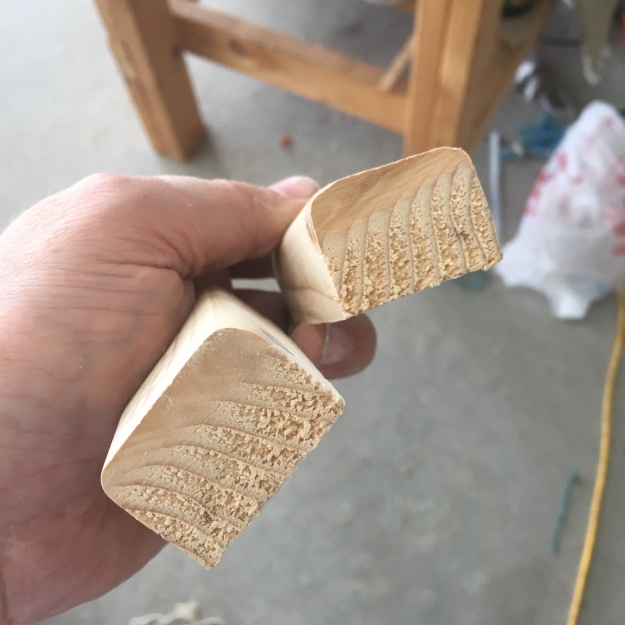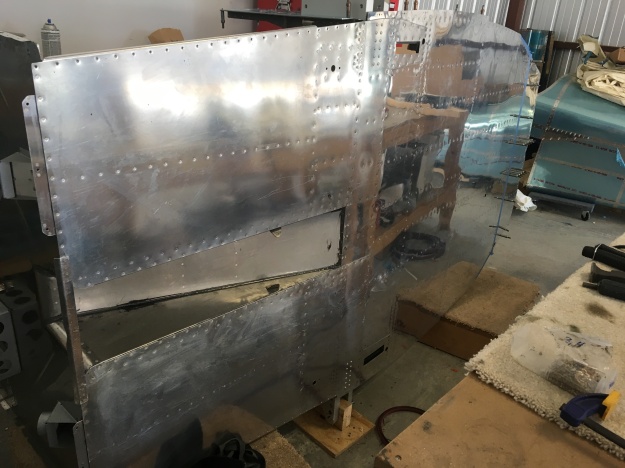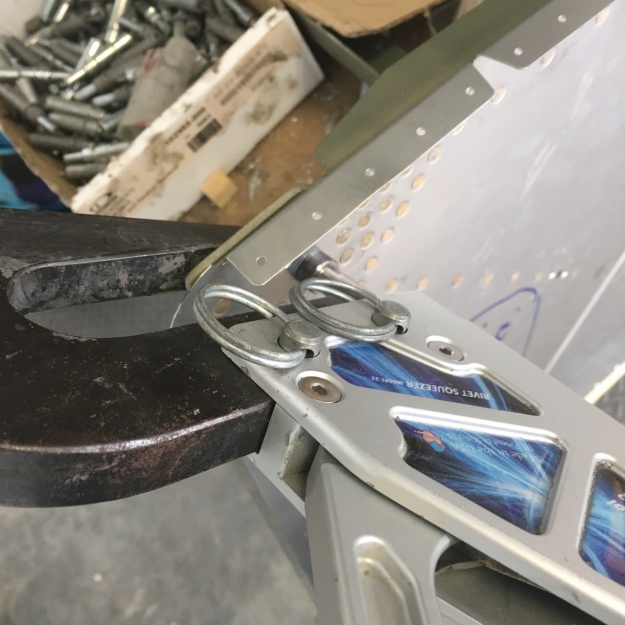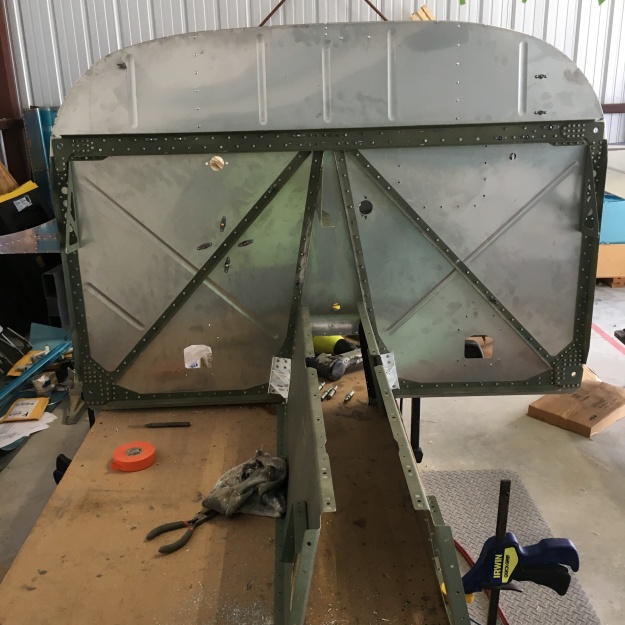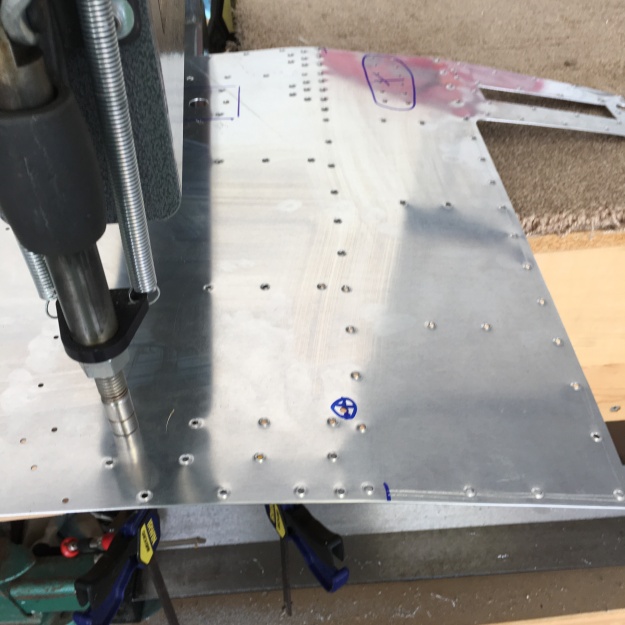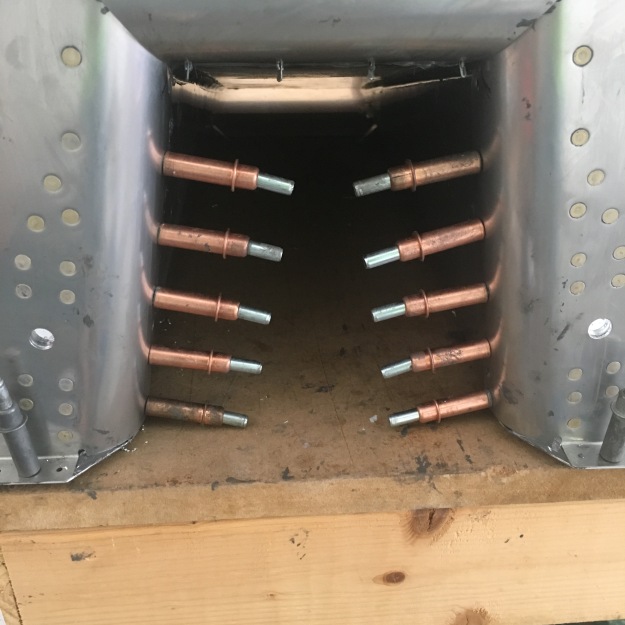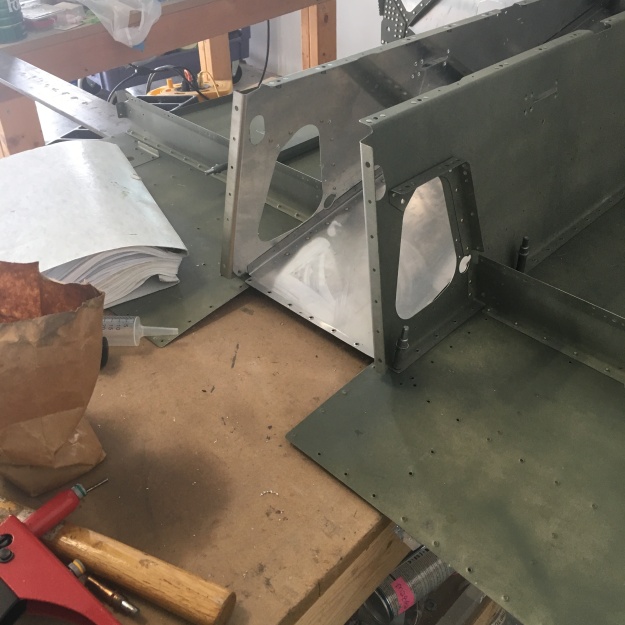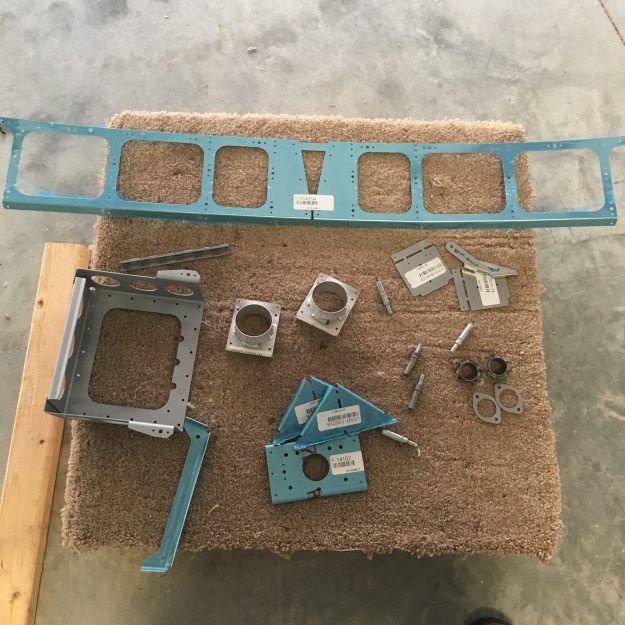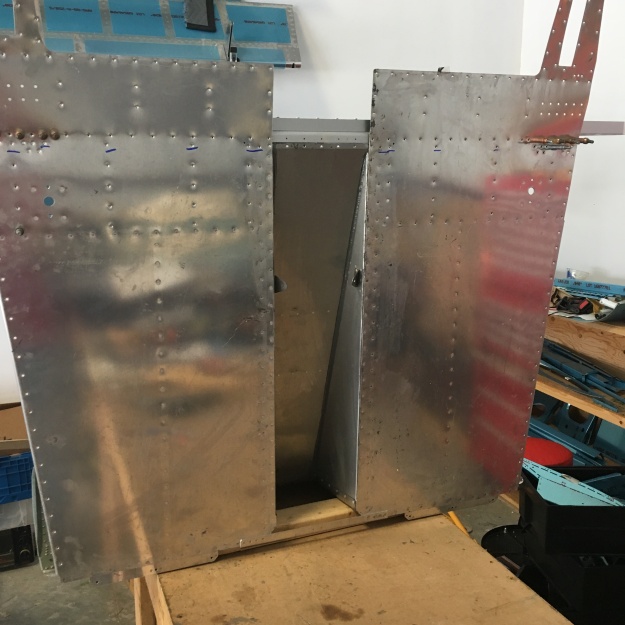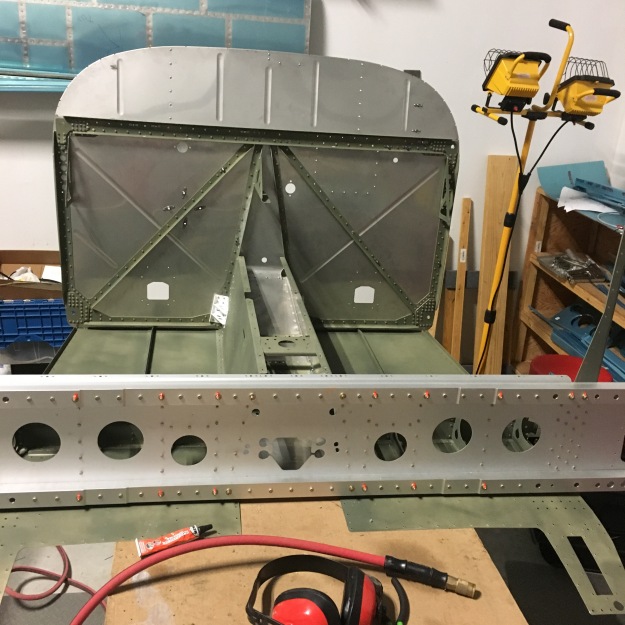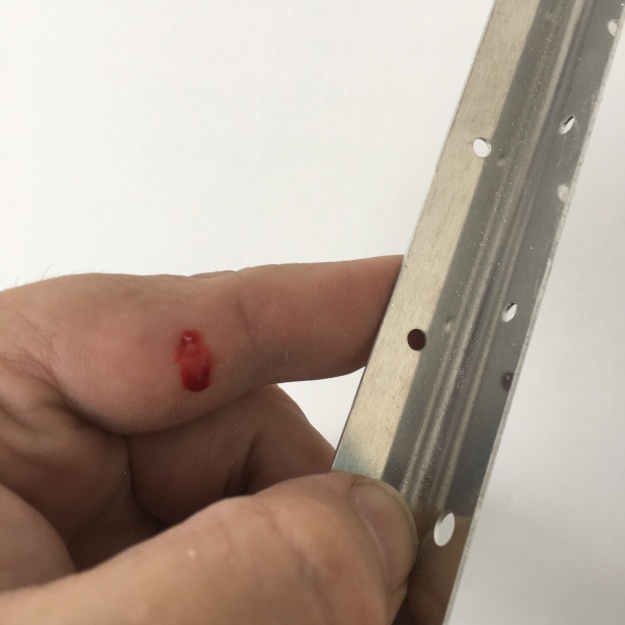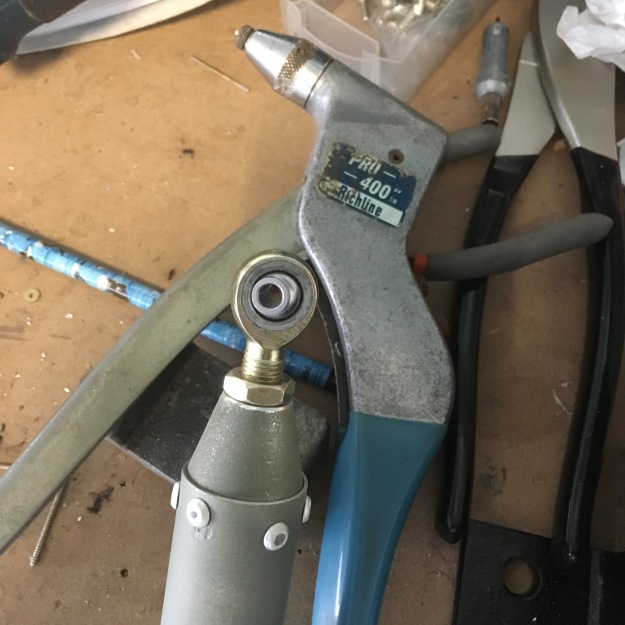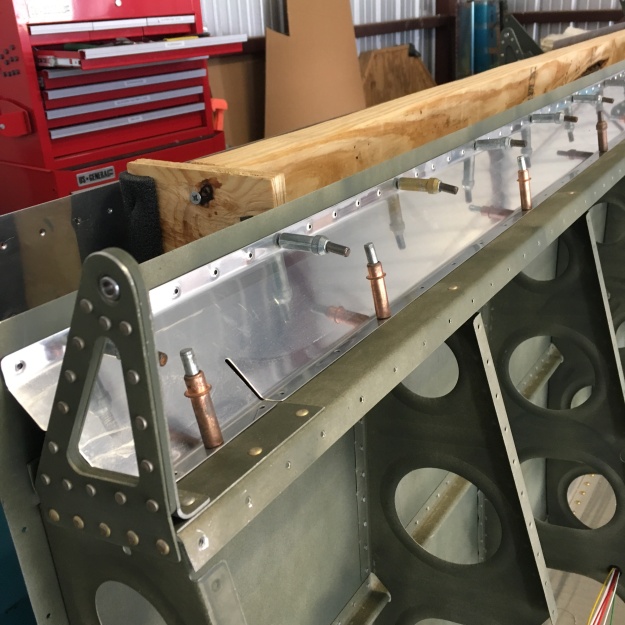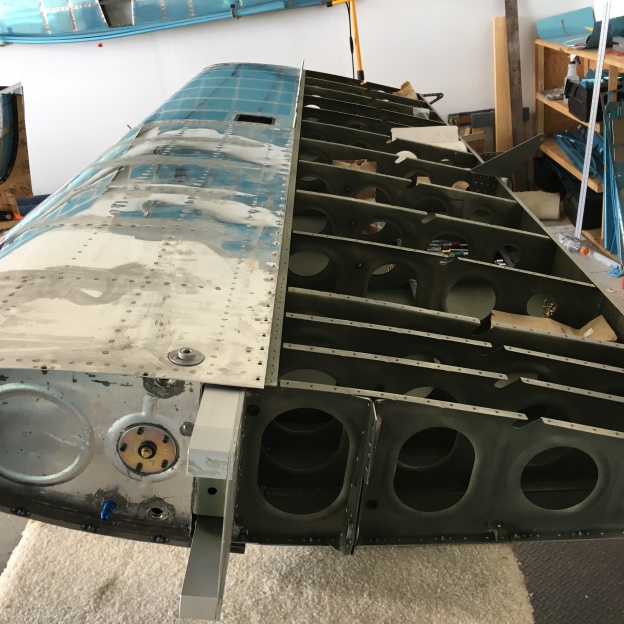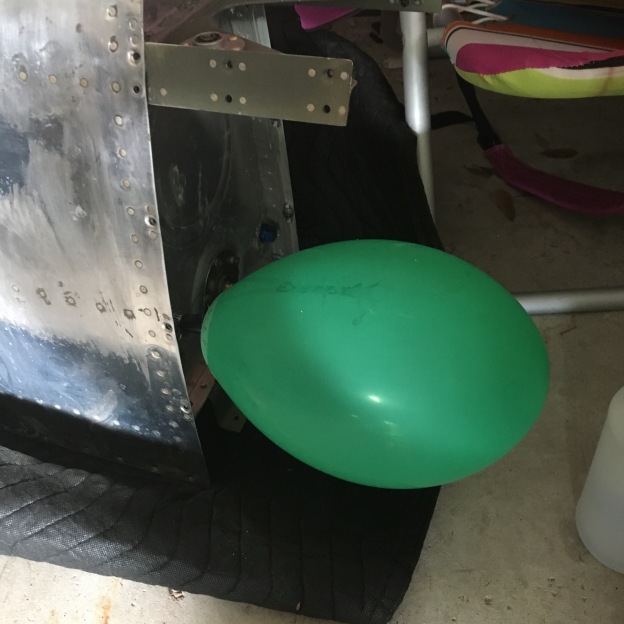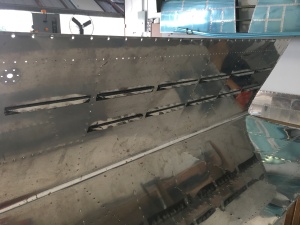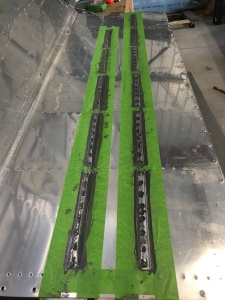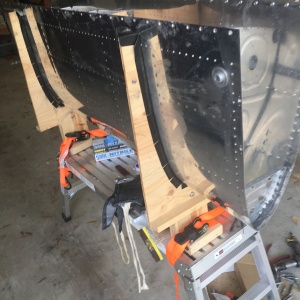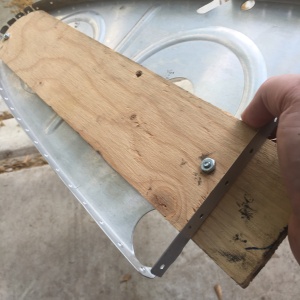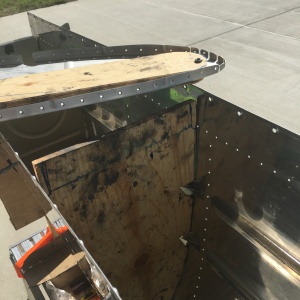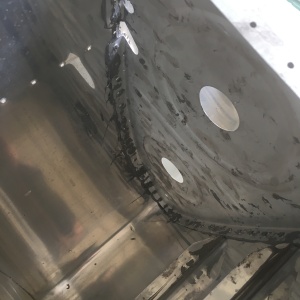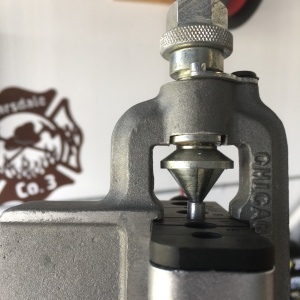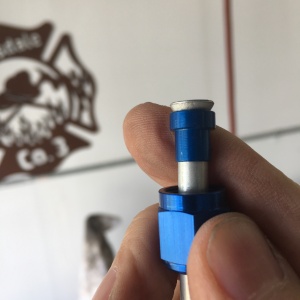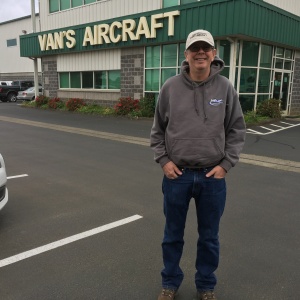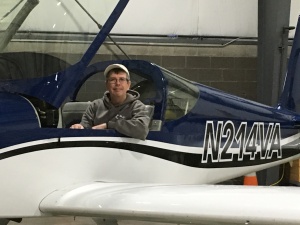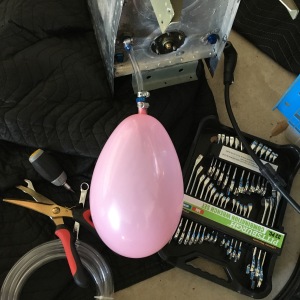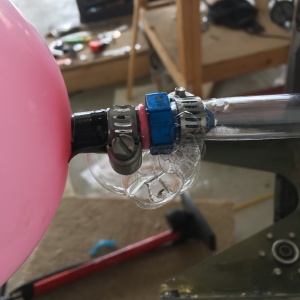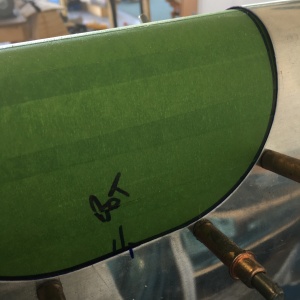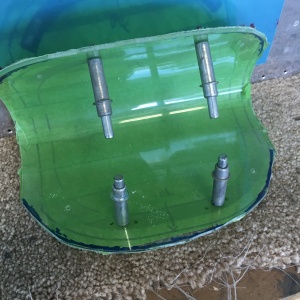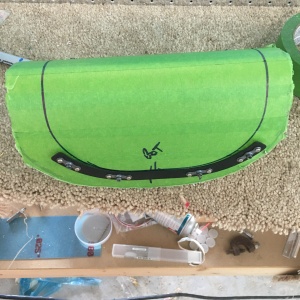First off, I finally lined up a job, so the rapid pace of progress is going to slow back down shortly. I’m going to work for a Silicon Valley autonomous car company, so we’ll be packing up and leaving Houston for sunny California. I’m looking to live south of the Bay which will be more convenient to an airport (only 10 minutes!). The new gig is across the street from Palo Alto airport so I can even fly to work if I choose. I’ll have to load up the shop and truck it to California, but I’ve done this before. I really hope this is the last time I have to move the plane by land.
But before I go, I want to get the big join done so that I can move the fuselage in one piece rather than a collection of smaller things (plus my hangar neighbor has offered to help me paint the cockpit interior if I get it done over Christmas!). With the front side skins prepped and the attachments ready to go it was time to start riveting them on (Section 29-12). I did some of the work flat on the ground, but most of it was done with the skins clamped to saw horses. That made it easy to reach the various rivets. I was able to back rivet most of them using my back rivet bucking bar.
With that done, I was able to cleco the skins to the front half fuselage and make it look almost like a real airplane cockpit!

There are a bunch more parts to attach that have to go in after the skins are roughly in place. So another day of part prep and priming is required to get there. The center channel cover section has to be bent a small amount. I did it by clamping pieces of wood across the channel and my bench and then carefully bending across the table edge. I got a nice, straight bend with a gentle curve. It fit well.
Then everything is clecoed to the skins and you get to riveting. It took a few days to get everything done. I was able to do the side attachments solo (a mix of back riveting and standard mushroom head/bucking bar for the tight squeezes), but the bottom rivets were just too hard to do well alone. So my son dropped in for a couple afternoons to bang those out. The cockpit became very rigid and strong as the rivets went in. What used to look like a random collections of rivet holes quickly became a place where each bulkhead and stiffener needed to go. As always, the holes lined up perfectly! Thanks Vans! There were still some holes left open. In the next sections they get filled by the root fairings and the intercostals. And of course, there are the lines of rivets for the “Big Join!” I had to use a variety of techniques to get to the rivets. I used my full array of bucking bars and even fabbed some small ones to get into a few of the tight squeezes. I ended up using my offset rivet set a lot to get to the #4 rivets. I do wish that I had an offset for #3 rivets as well.
With the structure in place, it was time to shore up the wings and to add the wing fairings. There are a couple of stiffeners that get riveted to the spar webs. Those were pretty easy to get on. The stiffeners require a bit of work. These are dimpled before you cut them out which is different than the normal procedure. It did help keep straight the sides that required dimpling from the ones that went undimpled onto the plane. There are some big nutplates that required my big dimple dies. There are sooooo many nutplates! The fairing look nice once they’re in place. I can now really visualize the wings attached to the plane.
The seat brace needs some work before it is added to the plane. There are some guides that restrain the side-to-side motion of the seats and what looks like a clamp to hold the seat covers. It took a while to dig out the parts because it wasn’t clear that the F-01405N seat back adjustment guides were cut from a bar of black plastic. I went through the part bins three times before I finally dug it out. I used a marking gauge to transfer the measurements and a chop saw to make the cuts square. The guides get rounded off. I just did that on a sander and then used a sharp knife to trim the threads off.
Next you fit a gusset that binds the seat back bar to the skins and intercostal. This gets match drilled in place with a lot of #40 holes drilled up to their final #30 size. The intercostal has some tough rivets. I really wanted that #3 offset bar to get the ones that bind the intercostal to the side rib. The roll bar brackets are bolted on. It’s a really tight reach, even for my slender fingers, but I got the nuts on the bolts and everything torqued up.
That completed section 29 except for the eyeball vents which I’m waiting to do until I get the instrument panel in place to avoid interference — the instructions say “Delay the following steps until after the completion of Section 35 to eliminate the possibility of interference with the bottom of the instrument panel.” So, I’m just waiting to get the area at least clecoed in place before working on the vents.
With that, I’m just about ready to take on section 30 — the big join. Well except for one thing. Vans just issued a service bulletin warning of cracks in the tail cone that are developing in some of the fleet. The cracks are not particularly dangerous, but it seemed like a better idea to get the fix in now instead of later. In particular, I have better access to the tail cone when it is off the plane instead of needed to crawl through to the back after the join. I pulled the tail cone out of the back corner of the hangar where it was literally collecting dust and laid it on its side for access. I used moving blankets to pad it so that I could crawl inside. I’ve seen others that do it by standing it on end, but that seemed a little extreme. I had no issues doing it on the ground like this. So, I drilled out the appropriate rivets and clecoed the doublers in place. There was no way to reach both sides here, so I had to wait until my son could get down to get them all done. I drew a matrix on the outside skin so that we could coordinate better on the rivets. I was able to back rivet all but one from the inside. The last one was just really tight. I was finally able to get the head of one of my yokes on it well enough to drive it. For a weird wart of a patch, it seems really strong and doesn’t look too bad. And in any case, it’s on the bottom of the plane!
Before starting the big join, I wanted to make sure that I could really secure the fuselage parts to the saw horses. I fabricated a spar cradle that slips into the spar from 2×6’s and a 2×4 stringer. This way, I could screw the stringer right to the sawhorse. It seems quite secure. I also ran a stringer between the two sawhorses on the left so that they couldn’t accidently shift if I (or the enthusiastic dog in the next hangar) bumped into them. I used tie down straps to help keep the back of the one half from shifting (hooked into the rear wing brackets). The tail cone is a bit more precarious, but it still isn’t going anywhere with the longerons bracketing the front fuselage. This piece is going to be pretty big — 15 feet or so. It will barely fit in the back of the hangar. I’m looking to get a larger T-hangar in California that will relieve some of these space woes.
 When I look aft from the firewall, I now really get an idea of exactly how big this airplane is compared to my RV-12. I think I’m going to have a lot of fun in this plane!
When I look aft from the firewall, I now really get an idea of exactly how big this airplane is compared to my RV-12. I think I’m going to have a lot of fun in this plane!

The next step is to get this monster clecoed together. That is certainly a two-person job. Once it is together, there are hundreds of rivets that are needed to complete the join. That will be a chore! I also have to finish fabricating a front block to let me use my rotisserie so that I can get the inside painted. I’m supposed to be in California in 3 weeks, so I better get a move on it!





































